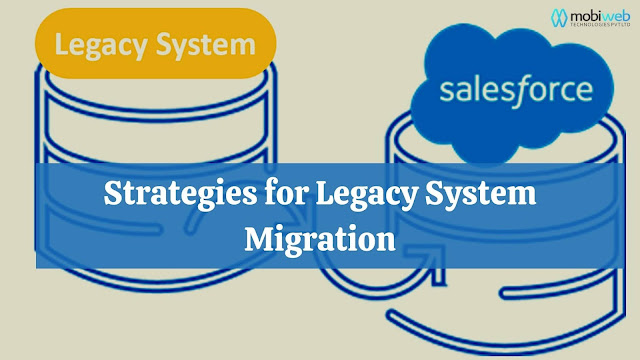Top 5 Strategies for Legacy System Migration
A Legacy system is any kind of outdated computer software or system in place of modern or newer systems. For example – Pagers, telegraphs and landlines. There are several disadvantages associated with legacy systems. This is the reason many companies and organizations are initiating the process of legacy system migration. There are various methods of doing this each with its pros and cons. To maximize the efficiency of the technology of your organization, you should have some replacement strategy in place. The top 5 strategies to ensure a successful transition into a shiny new system are as follows:
Aim for automated migration solution:
Legacy system migration is often viewed as a one-time activity and developers end up going for manual actions hoping to execute them for only one time. Manual actions can significantly slow down the operations and even if it is a one-time operation, manual actions should not be adopted. There are various reasons to avoid such an approach as if the migration is divided into multiple waves, then the same actions need to be repeated multiple times. This can be done easily in the automated approach.
Make migration a separate project:
The legacy application migration is not as simple as "export and import" item handled by a data migration tool with predefined mapping for target systems. It is a complicated activity and needs a separate project, plan, approach, team and budget. At the beginning of the project, an entity-level plan must be created so that there are no surprises for later on. The migration approach will define whether the data will be loaded in one go or will be loaded in small batches every week. The decision is not simple and should be communicated to the technical and business stakeholders to make them aware of the new system.
Estimate realistically:
This project is included with several time-consuming tasks which adds to the complexity of the legacy system migration. The factor for estimation should be the number of fields to be transferred to the target system from a source system. At every stage of the project, some amount of time is required which includes understanding the field, configuring transformations, mapping the source field to the target field, measuring data quality, performing tests and so on.
Check data quality:
Even if there are no data quality issues reported from the legacy systems, the quality of source data should not be overestimated. The new system comes with new rules which can be breached with legacy data. The data can be so historical that it may not be touched for a long time but could be activated while transferring to the new system. The quality of data significantly affects the efforts and the further we go in history the more mess will be discovered. Thus, it is necessary to decide on how far you should go and want to transfer the history into the new system.
Engage business people:
The people who can truly understand the data are the business people who can decide what data to keep and what data can be thrown away. During the mapping exercise, it is important to involve someone from the business team for future backtracking. It is also helpful to record the mapping decisions and their reasons.
For many enterprises, legacy systems form the backbone and this holds the organizations back from leveraging new digital technologies and creating new experiences for their partners and customers. There are many ways which you can adopt to enhance the effectiveness of the strategies. The system's migration should be done slowly and steadily with suitable legacy application migration services as carrying out the entire process can result in a significant loss in organizational efficiency.




Comments
Post a Comment